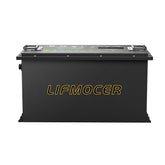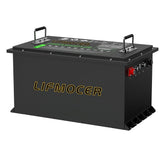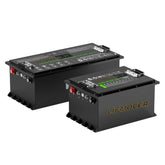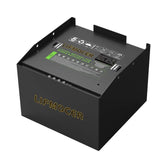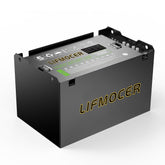Lithium Ion Battery Charging Safety Guide
As the core power source of modern electronic devices, lithium batteries are favored by users for their high performance and long life. However, the wrong charging method may cause battery performance degradation and even lithium-ion battery fire hazard. This article will start from the working principle of lithium battery, combined with technical parameters and actual cases, to systematically sort out the key considerations in the charging process.
Charging Principle And Potential Risk Analysis
Lithium battery charging and discharging is realized through the embedding and de-embedding of lithium ions between the positive and negative electrodes, and this process is accompanied by electrolyte decomposition, electrode material expansion and other side reactions. When the battery is overcharged, excessive deposition of lithium ions may form lithium dendrites, piercing the diaphragm and triggering a short circuit; and the high temperature environment will accelerate the decomposition of the electrolyte and the release of combustible gases. Data show that 80% of lithium battery safety accidents originated from overcharging, short circuit or high temperature abuse, so scientific charging needs to avoid risks from the source.
Core Charging Parameters and Operation Specifications
Charger Adaptability
A charger that matches the voltage and current parameters of the battery must be used. For example, 18650 batteries with a rated voltage of 3.7V need to be paired with 4.2V constant voltage charging equipment, and if a 6V charger is mistakenly used, the battery will be overloaded due to the voltage and generate intense internal heat. It is recommended to prioritize the original factory certified charger, whose current output error is usually controlled within ±3%, while the error of inferior chargers may be more than ±15%, resulting in the shortening of battery life by more than 40%.
Temperature Threshold Control
The optimal charging temperature range is 10℃ - 30℃. A brand of cell phone battery charging at 40 ℃ environment, cycle life from 800 times plummeted to 500 times; and at -5 ℃ low-temperature charging, lithium ion migration rate decreased by 70%, the battery capacity of permanent loss of 15%. Experiments show that charging at 25 ℃ environment, the battery internal resistance increase rate of only 0.3% / year, while at 45 ℃ is as high as 1.2% / year.
Charging Current Limit
Recommended charging rate is 0.2C - 0.5C multiplier. Take 2000mAh battery as an example, 0.5C charging current is 1A, it takes about 2 hours to fill up, at this time the battery surface temperature is controlled within 40℃. If 3C fast charging is used, although the charging time is shortened to 20 minutes, the internal temperature of the battery may exceed 60℃, resulting in the decomposition of the SEI film (solid electrolyte interface film) and irreversible capacity degradation.
Scenario-Based Charging Safety Practices
Daily Use Scenarios
- Avoid deep discharge: It is recommended to charge immediately when the power level is lower than 20%. Over-discharge (<5%) will dissolve the negative electrode copper foil and cause the internal resistance of the battery to increase by more than 30%.
- Segmented charging strategy: For large batteries with capacity ≥5000mAh, charging can be completed in two sessions, with 1-hour natural cooling interval each time to reduce the risk of thermal runaway.
- Long-term storage management: Idle batteries need to be kept at 50% charge and replenished to 60% every 3 months to avoid irreversible reaction between electrolyte and electrode active substance.

Special Environmental Response
- High-temperature protection: When charging in the car in summer, it is necessary to ensure that the battery pack is well ventilated, and a brand of electric car test shows that closed space charging can make the battery temperature rise 15 ℃, and the probability of thermal runaway is increased by 5 times.
- Low-temperature charging skills: Northern winter is recommended to preheat the battery to more than 5 ℃ before charging, to avoid lithium dendrite precipitation piercing the diaphragm.
- High altitude use: When the altitude exceeds 3,000 meters, the internal pressure of the battery decreases by 10%, and it is necessary to reduce the charging current to less than 0.3C to prevent flatulence and bulging.
Abnormal State Emergency Treatment
If the following abnormalities occur in the battery during charging, you need to stop the operation immediately:
Physical deformation: the battery shell expands more than 2% of the original size, and the internal pressure needs to be professionally tested.
Odor leakage: the decomposition of the electrolyte produces ethylene, propylene and other gases with an irritating odor, which may cause deflagration.
Temperature surge: battery surface temperature exceeds 60 ℃, need to be immediately transferred to a safe area, water-based fire extinguishers to cool down.
Technology Iteration and Safety Upgrade
The new generation of lithium batteries has integrated intelligent Battery management system (BMS), such as BYD blade battery BMS (Battery Management System) can monitor the difference in voltage of single unit in real time, and automatically equalize charging when the pressure difference exceeds 300mV. Users should regularly test the internal resistance of the battery through professional equipment, if the internal resistance increases to 150% of the initial value, the battery needs to be replaced in time.
Lithium-ion battery charging safety needs to follow the three principles of 'adaptability, temperature control, current limitation', and dynamically adjust the strategy in combination with specific use scenarios. By mastering the core technical parameters and emergency treatment methods, users can not only extend the battery life, but also effectively avoid safety risks, and truly realize the balance between high efficiency and safety.


